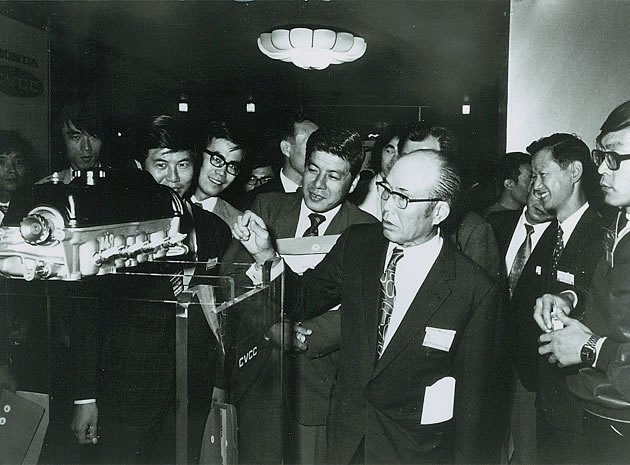Memoirs Of An Independent Repair Shop Owner: How Honda's CVCC Gave Me My 10 Best Years
This entry could very well have been included in the last series of articles (“Phil’s Podium of the Automotive Pure”), but for one important consideration: the technology involved is no longer being widely used in the automotive field. Otherwise, it solidly qualifies for “The Podium” in every other important aspect. The truth is, this technology is greatly significant in the history of the automobile—even surpassing many of the technologies listed.
Back in the early days of emissions control here in the U.S.A., in the wake of the first so-called “Energy Crisis”, which left motorists calling for more fuel economy in their automobiles due to the increased cost of fuel (if we only knew where all of THAT mess was headed!), I’d almost call it “amusing” witnessing all of the different ways manufacturers were addressing the issues.
The U.S. group, which seemed to be relying on input from “bean counters” and marketing strategists, was trying to make the old inefficient designs passable through use of a cheap and spindly patchwork of detuning modifications, add-on systems, and gargantuan catalytic converters.
The Europeans, who seemed to be actually raging somewhat at these governmental and motorist-driven demands, responded similarly as they did to the whole Air Conditioning issue, in earlier days. They went with the whole patch-and-add-on idea, but one-upped the Yanks by making their systems overly complicated, by comparison, as well as being a real obstruction to routine maintenance accessibility. They differed completely in their approach to catalytic converter use, opting initially to use the so-called “Thermal Reactor” exhaust manifold design, which were as unreliable as the first volley of catalyst systems the Yanks were using, not to mention a lot more expensive to replace.
The Japanese, on the other hand, were already positioned—more by developmental circumstances than actual foresight—to take advantage of the situation as far as the fuel efficiency issue.
As far as the emissions issue, they were somewhat fragmented in their approach.
As it turned out, Honda had a design they had been developing in the course of their foray into the passenger car field. It was called Compound Vortex Controlled Combustion—acronym: “CVCC”. While this design was not necessarily unheard of in automotive engineering circles, they were the only ones who wanted to actually be able to use it on mass-produced vehicles, where its full potential as a fuel economy and emissions breakthrough could be realized. And was it EVER!
It was so good, Honda was able to avoid the use of many add-on emissions control components common to the day. In fact, a catalytic converter was not required on any of their U.S. vehicles until 1980, and no engine management computer of any kind was seen until the 1984 model year (a feedback intake air-bleed system).
Fuel economy was nothing short of incredible, and has only been MATCHED by some of the modern hybrid Japanese entries (including Honda’s). Keep in mind that all of this was accomplished with a CARBURETOR and NO COMPUTER CONTROL!
We techs really appreciated these facts, as we saw only modest changes in underhood technology during the decade-long heyday of these engines. It was the best ten years of my automotive repair career, HANDS-DOWN!
It seemed that Honda was the lone problem-solving “Eagle” soaring above the rest of the grounded, whining and recalcitrant “Turkeys”; and Honda built its legendary reputation during this period. They continued to soar with the CVCC engine and the carburetor until the late ‘80’s, when EFI technology finally came of age, and has become the industry standard.
It’s ironic that what was accomplished by this upstart, one-time motorized bicycle manufacturing company more than thirty years ago—and was pushed aside and supplanted by a number of somewhat questionable automotive trends—is once again in demand.
Honda’s official history of the CVCC can be found here – Ed
Phil Coconis is the owner of a West Coast independent auto repair shop.
More by Phil Coconis
Latest Car Reviews
Read moreLatest Product Reviews
Read moreRecent Comments
- 28-Cars-Later WSJ blurb in Think or Swim:Workers at Volkswagen's Tennessee factory voted to join the United Auto Workers, marking a historic win for the 89- year-old union that is seeking to expand where it has struggled before, with foreign-owned factories in the South.The vote is a breakthrough for the UAW, whose membership has shrunk by about three-quarters since the 1970s, to less than 400,000 workers last year.UAW leaders have hitched their growth ambitions to organizing nonunion auto factories, many of which are in southern states where the Detroit-based labor group has failed several times and antiunion sentiment abounds."People are ready for change," said Kelcey Smith, 48, who has worked in the VW plant's paint shop for about a year, after leaving his job at an Amazon.com warehouse in town. "We look forward to making history and bringing change throughout the entire South." ...Start the clock on a Chattanooga shutdown.
- 1995 SC Didn't Chrysler actually offer something with a rearward facing seat and a desk with a typewriter back in the 60s?
- The Oracle Happy Trails Tadge
- Kwik_Shift_Pro4X Union fees and corruption. What can go wrong?
- Lou_BC How about one of those 2 foot wide horizontal speedometers out of the late 60's Ford Galaxie?





































Comments
Join the conversation
VW got smart in that era also. The Bosch CIS (K-Jetronic) fuel injection system introduce in 1977 was delightfully simple and kept the vacuum line plumbing to a minimum as well as allowing pre 1980 cars to run without a cat. This shows up clearly if you contrast a 1984 Jetta with a 1984 Accord, since my family had both.
To all commenters: It seems that I've struck a nerve with many on this topic. Stay tuned for the next "Memoirs" entry, where I'll provide rebuttal. Cheers!